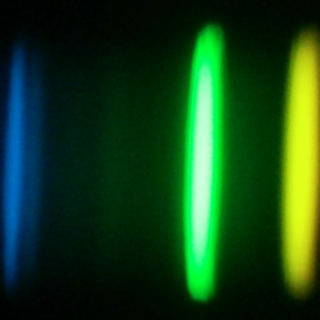Bibcode
Allende-Prieto, C.; Sánchez-Almeida, J.
Referencia bibliográfica
The Astrophysical Journal, Volume 763, Issue 1, article id. 50, 18 pp. (2013).
Fecha de publicación:
1
2013
Revista
Número de citas
33
Número de citas referidas
29
Descripción
Large spectroscopic surveys require automated methods of analysis. This
paper explores the use of k-means clustering as a tool for automated
unsupervised classification of massive stellar spectral catalogs. The
classification criteria are defined by the data and the algorithm, with
no prior physical framework. We work with a representative set of
stellar spectra associated with the Sloan Digital Sky Survey (SDSS)
SEGUE and SEGUE-2 programs, which consists of 173,390 spectra from 3800
to 9200 Å sampled on 3849 wavelengths. We classify the original
spectra as well as the spectra with the continuum removed. The second
set only contains spectral lines, and it is less dependent on
uncertainties of the flux calibration. The classification of the spectra
with continuum renders 16 major classes. Roughly speaking, stars are
split according to their colors, with enough finesse to distinguish
dwarfs from giants of the same effective temperature, but with
difficulties to separate stars with different metallicities. There are
classes corresponding to particular MK types, intrinsically blue stars,
dust-reddened, stellar systems, and also classes collecting faulty
spectra. Overall, there is no one-to-one correspondence between the
classes we derive and the MK types. The classification of spectra
without continuum renders 13 classes, the color separation is not so
sharp, but it distinguishes stars of the same effective temperature and
different metallicities. Some classes thus obtained present a fairly
small range of physical parameters (200 K in effective temperature, 0.25
dex in surface gravity, and 0.35 dex in metallicity), so that the
classification can be used to estimate the main physical parameters of
some stars at a minimum computational cost. We also analyze the outliers
of the classification. Most of them turn out to be failures of the
reduction pipeline, but there are also high redshift QSOs, multiple
stellar systems, dust-reddened stars, galaxies, and, finally, odd
spectra whose nature we have not deciphered. The template spectra
representative of the classes are publicly available in the online
journal and at ftp://stars:kmeans [at] ftp.iac.es.
Proyectos relacionados

Grupo de Estudios de Formación Estelar GEFE
El proyecto interno GEFE está enmarcado en el proyecto coordinado, ESTALLIDOS, financiado por el plan nacional desde el año 2001. El ultimo proyecto aprobado es ESTALLIDOS 6.0 (AYA2016- 79724-C4-2-P). En el proyecto GEFE trabajamos en base al caso científico del proyecto ESTALLIDOS 6.0. Los estallidos de formación estelar (Starbursts o SB) son
Casiana
Muñoz Tuñón

Abundancias Químicas en Estrellas
La espectroscopía de estrellas nos permite determinar las propiedades y composiciones químicas de las mismas. A partir de esta información para estrellas de diferente edad en la Vía Láctea es posible reconstruir la evolución química de la Galaxia, así como el origen de los elementos más pesados que el boro, forjados principalmente en los interiores
Carlos
Allende Prieto